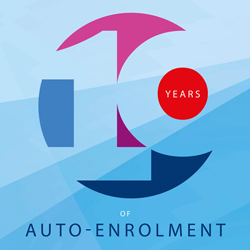PENSION PARADISE
ALMOST LOST
We take the consensus around auto-enrolment for granted, but there was a real risk smaller employers could have been excluded. Now low earners, women and ethnic minorities deserve a better deal
Auto-enrolment has been a revolutionary success for UK pensions, increasing coverage by 10m people after decades of decline.
1970s politicians realised the post-war baby boom and sharply declining birth rates would require better pensions, and introduced an earnings-related State Pension, for those without salary-related workplace schemes, which allowed people to opt out (‘contracting out’) into a DB scheme if they had one. ‘Personal pensions’ were added in the 1980s/1990s.
The 2000 market meltdown and earlier tax changes accelerated DB scheme failures or closure, and large losses in DC pension funds, pension confidence plummeted.
The noughties saw a further pensions policy revamp. To improve coverage of workplace pensions, all employers who did not have a workplace pension already, would need to select a stakeholder pension scheme, with controlled charges and fairer terms, to offer any staff who wanted one.
Then, determined to increase the generosity of State Pensions while controlling Exchequer costs, in 2002/3 Chancellor Gordon Brown introduced Pension Credit, a move that dramatically increased pensioner means-testing.
Working with the Number 10 Policy Unit at that time, I strongly advised against both these changes, warning that, although they sounded good in theory, they created longer-term problems. Pension Credit disincentivised pension contribution for workers who would fear losing pension money in the means-test. Employers only had to pay into stakeholder pensions if their staff asked to join, so employers were disincentivised from publicising their schemes.
The next stage of auto-enrolment should ensure workers,
regardless of earnings or age, are auto-enrolled
and contributions start from pound zero.
Pension coverage kept plummeting in the noughties, raising concerns about future pensioner poverty and, in 2003 the Pensions Commission was established. Its excellent second 2005 Report recommended auto-enrolment and the new system started in 2012, with widespread political and social support.
Here we are, 10 years on. So what have we learned? ‘Nudge’ theory that suggested workers would stay opted in, rather than bother with form-filling for opt-outs, has worked brilliantly.
But the success of the programme was not always guaranteed, Indeed, when I became pensions minister, there was a real possibility the programme would be halted. When I took office in May 2015, the auto-enrolment programme had been going for 3 years, with few problems. But only 43,000 employers – the largest – had joined, less than 4 per cent of the remaining 1.2m smaller and micro employers – that needed to start by 2017. In numerous emergency meetings with Number 10 advisers, ministers and Cabinet Office, I had to insist that the programme must include every employer. Colleagues were nervous about mothers enrolling nannies or disabled people enrolling their carers. Suggestions of excluding employers with more than 10 staff were favoured, but we managed to overcome the objections.
Having made a stand, the programme thankfully continued and is considered globally as a model for others to learn from.
So what still needs to be done?
In Summer 2015, I discovered that low earners were, unknowingly, paying 25 per cent extra for their workplace pension, because their employer’s chosen scheme operated on a net pay basis, rather than relief at source (RAS) tax relief administration. Many providers, even the largest, seemed content to use net pay for low earners, but Nest thankfully chose RAS. The Treasury, after years of campaigning, has finally committed to changing it by 2025, but these lower-earners, mostly women, have suffered lower take-home pay due to auto-enrolment for up to 10 years.
Other flaws include auto-enrolment excluding millions of low earners in part-time jobs which each pay below the £10,000 a year minimum earnings threshold, again, mostly women. Also, pension contributions are not on entire salary, only starting from the lower end of band earnings, and the under-22’s are excluded too.
The next stage of auto-enrolment should ensure workers, regardless of earnings or age, are auto-enrolled and contributions start from pound zero.
What else is needed? Auto-enrolment creates golden opportunities for pension providers to reach out directly to all UK workers. Auto-escalation, suggesting part of a pay rise can be boosted as additional pension contributions and simplifying pensions language, junking the jargon, can help providers operate direct to consumer – D2C – rather than relying on intermediaries or the Government for more business.
New products, designed for the needs of individual workers, rather than just one-size-fits-all ‘default’ options – which can be entirely unsuitable for that particular person – are urgently needed. Pensions that people can understand, be proud of and take a real interest in where and how their money is being used, can also improve recognition of their own and their employer contributions – plus taxpayer incentives.
These changes could revolutionise workplace and personal pensions. Ten years on, it is time to move forward and grasp the opportunities.
